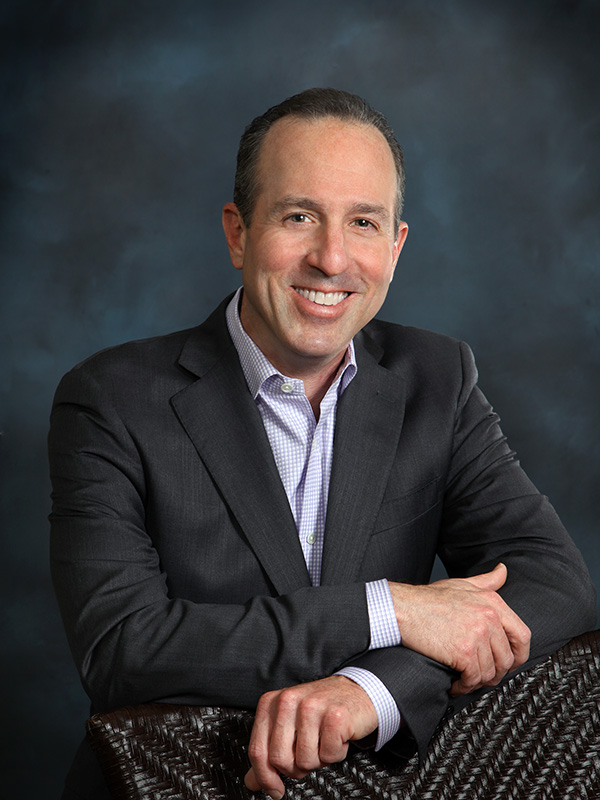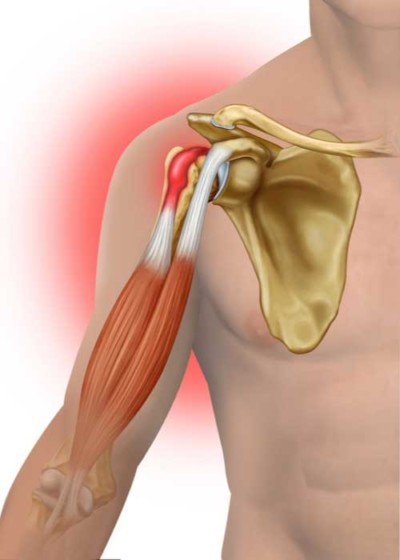Biceps Tendon Injury Specialist

Are you an athlete who participates in sports that involve heavy overhead lifting? If so, you may be at risk of tearing your biceps tendon. A biceps tear can occur from repetitive overuse, a fall, heavy lifting or degeneration of the tendon over time. Biceps tendon injury specialist, Dr. Mark Getelman provides diagnosis and both surgical and nonsurgical treatment options for patients in Los Angeles who have suffered a biceps tendon injury. Contact Dr. Getelman’s team today!
Biceps Tendon Tear Overview
The biceps muscle which allows the arm to rotate and the elbow to bend is located in the front of the upper arm. The upper portion of the muscle is attached to the shoulder joint by the biceps which has 2 insertions, known as the long head and short head. A long head biceps tendon injury can occur from repetitive overuse, a fall, tendon degeneration or bone spurs in the biceps groove. Dr. Mark Getelman, orthopedic shoulder specialist, is available to treat a biceps tendon tear, biceps tendon subluxation and dislocation of the biceps tendon from the groove for patients living in the Van Nuys, Westlake Village, Thousand Oaks and Los Angeles, California communities.

Characterized as a long cord-like structure, the biceps tendon is located in the front of the shoulder. It originates from the top of the shoulder socket (glenoid) and exits through a tight bony trough, known as the biceps groove. Below the shoulder joint, this tendon becomes the long head of the biceps muscle. The short head of the biceps rarely injured and is a continuation of the conjoined tendon, which originates from the coracoid, a bony hook at the front of the shoulder blade. Thus the biceps arises from muscle two anchor points in the shoulder region which then converge at the muscle in the upper arm. The lower part of the bicep muscle again becomes a single tendon that is attached to the forearm and can also become injured in the elbow area.
A biceps tendon can tear, subluxate, or dislocate without tearing out of its groove. A tear can occur at either the shoulder or the elbow from repetitive overuse, a fall, heavy lifting or degeneration of the tendon over time. Tears are classified as partial or complete. Partial tears do not completely break the tendon, while complete tears break the tendon in two. Subluxation is caused by traumatic injury or degenerative failure of the upper part of the rotator cuff’s subscapularis tendon. Dislocation of the biceps tendon from its groove is less frequent than subluxation and is often seen in combination with a tear of the subscapularis tendon.
Biceps Tendon Injury Symptoms
The most common symptom associated with a long head biceps tendon tear and biceps tendon dislocation is severe, sudden pain at the injured area. Patients may also experience swelling, weakness, bruising and difficulty turning the arm. Subluxation may also cause a “clunk” when rotating the arm outward or inward.
Biceps Tendon Injury Diagnosis
A biceps tendon injury is typically diagnosed after a patient’s history of injury, review of symptoms and a physical examination. During the examination, Dr. Getelman will ask a patient to bend the arm and tighten the biceps muscle and he will also look for a visible deformity in the front of the elbow. An MRI scan is typically performed to view the soft tissues in great detail and confirm a partial or complete biceps tendon tear.
Biceps Tendon Injury Treatment
Non-Surgical
Certain biceps tendon injuries can heal with conservative treatment options such as rest, ice, anti-inflammatory medications and cortisone injections. If the long head biceps ruptures, there may be a cosmetic asymmetry where the muscle falls creating a “popeye deformity”. Typically the pain leading up to the actual rupture may be significant . Once it ruptures, there may be bruising, swelling and pain which may then subside over several days. The pre-injury pain may then go away. There may be little functional loss except for some muscle cramping particularly with rotational forearm activity and many may choose nonoperative management provided they are willing to accept the cosmetic changes.
Surgical
Surgical treatment for a biceps tendon injury depends on the nature and extent of tendon damage. If a significant portion of the tendon is damaged, completely ruptured or dislocated from the groove, a biceps tenodesis may need to be performed by Dr. Getelman. The procedure is performed by removing the torn tendon stump from inside the shoulder and then re-attaching the remaining tendon to the bone in the upper arm (humerus). Originally this required an open surgical approach. However, Dr. Getelman has developed a predictable arthroscopic approach done in the suprapectoral position. He has published his results in the Journal of Shoulder and Elbow Surgery and frequently is asked to teach his technique
For additional resources on a biceps tendon injury, such as biceps tendon subluxation or a biceps tendon tear, contact the orthopedic office of Dr. Mark Getelman, shoulder specialist located in the Van Nuys, Westlake Village, Thousand Oaks and Los Angeles,, California communities.
